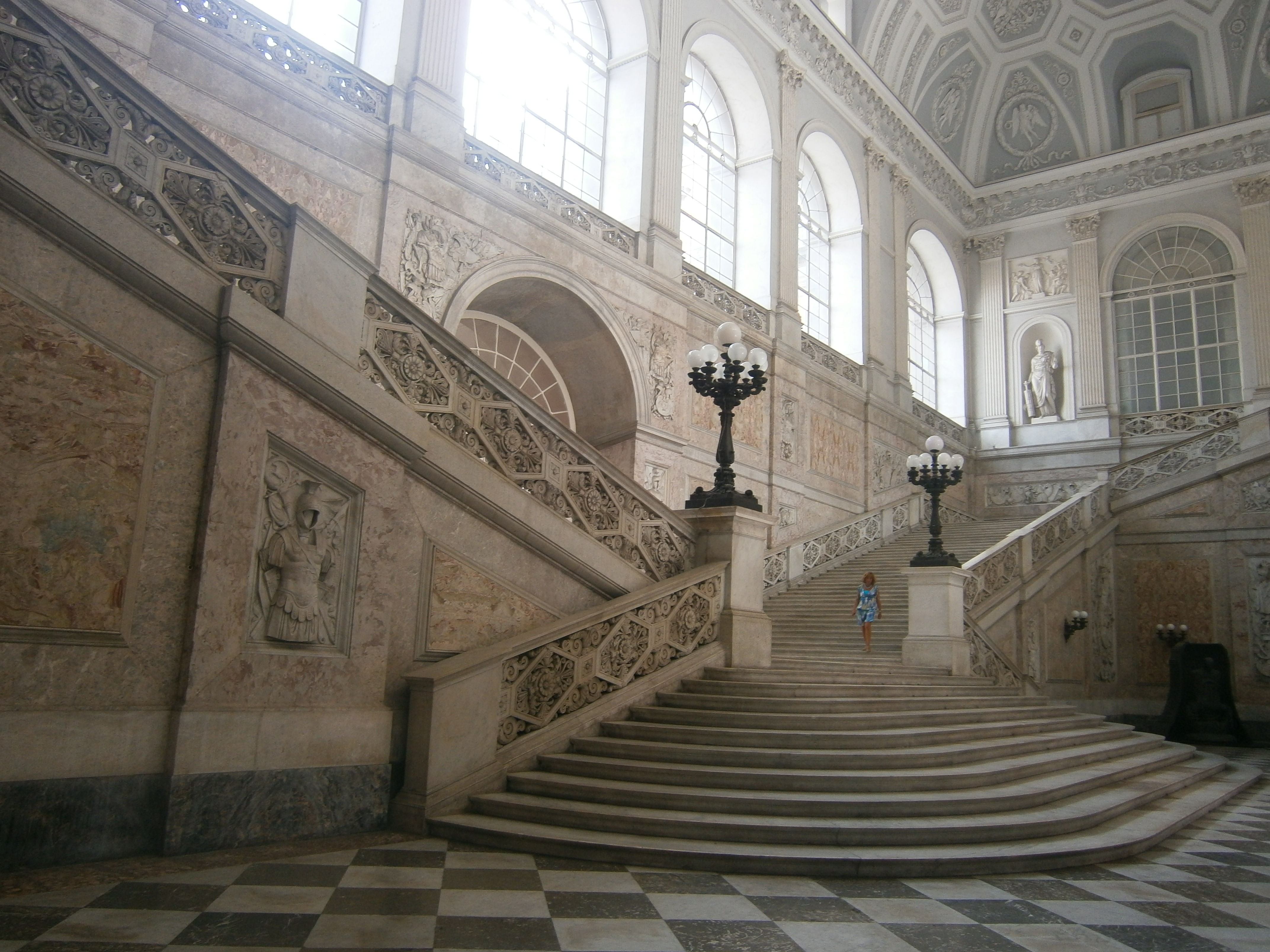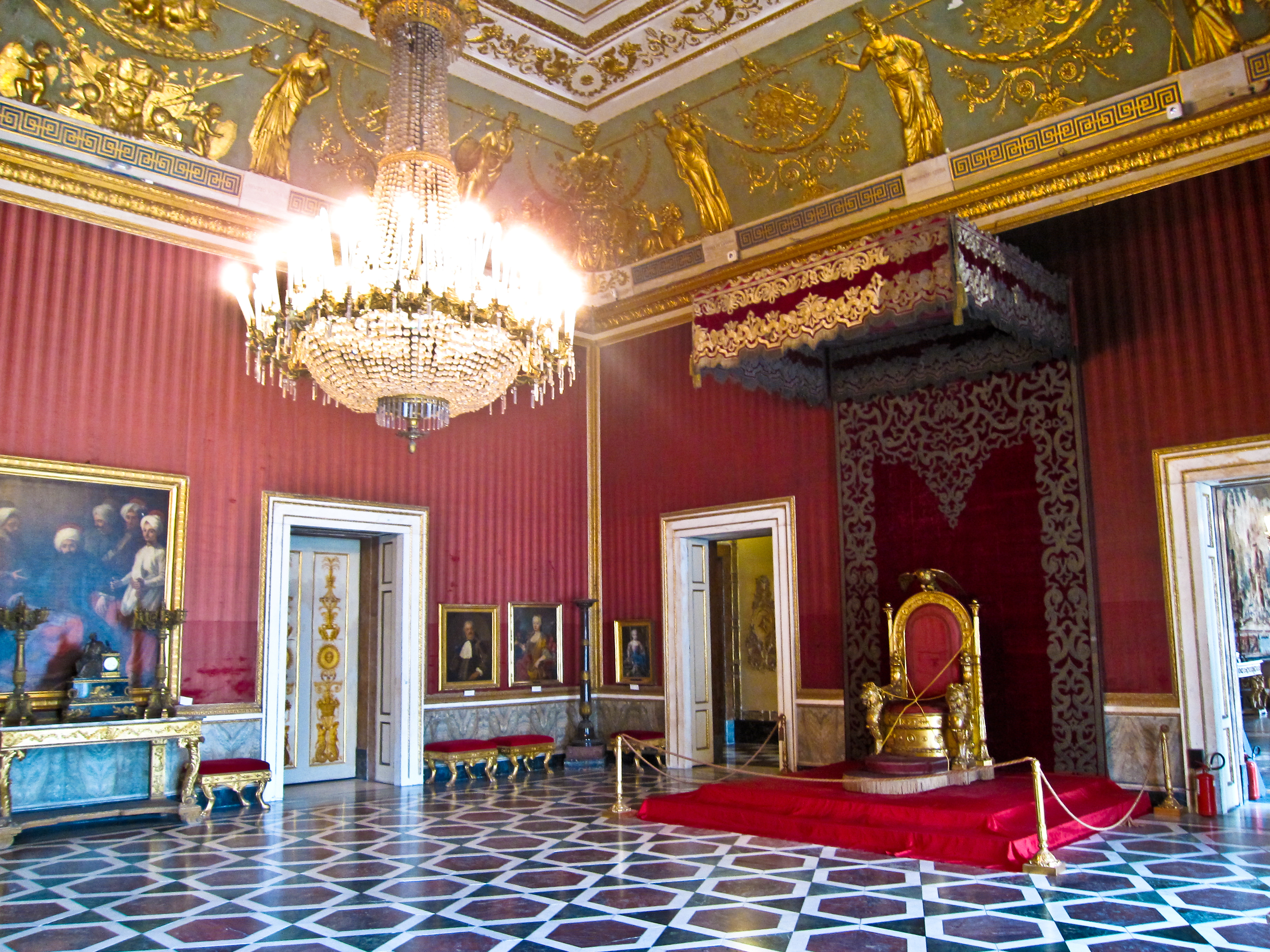Royal Palace of Naples on:
[Wikipedia]
[Google]
[Amazon]


 The Royal Palace of Naples ( it, Palazzo Reale di Napoli, italic=no, nap, Palazzo Riale ‘e Napule) is a palace, museum, and historical tourist destination located in central
The Royal Palace of Naples ( it, Palazzo Reale di Napoli, italic=no, nap, Palazzo Riale ‘e Napule) is a palace, museum, and historical tourist destination located in central
File:Palazzo Reale di Napoli - Ruggero il Normanno.jpg, Roger the Norman (Roger II of Sicily)
File:Palazzo Reale di Napoli - Federico II.jpg, Frederick II ( Holy Roman Emperor)
File:Palazzo Reale di Napoli - Carlo I d'Angiò.jpg, Charles I of Anjou
File:Palazzo Reale di Napoli - Alfonso V d'Aragona.jpg, Alfonso V of Aragon (Alfonso I of Naples)
File:Palazzo Reale di Napoli - Carlo V d'Asburgo.jpg, Charles V, Holy Roman Emperor (Charles I of Spain)
File:Palazzo Reale di Napoli - Carlo III di Borbone.jpg, Charles III of Spain (Charles of Bourbon)
File:Palazzo Reale di Napoli - Gioacchino Murat.jpg, Gioacchino Murat
File:Palazzo Reale di Napoli - Vittorio Emanuele II.jpg, Vittorio Emanuele II
Royal Palace of Naples - Official website
Royal Palace of Naples
{{Authority control Houses completed in 1616 Royal residences in the Kingdom of Naples Palaces in Naples Baroque palaces in Italy Tourist attractions in Naples Museums in Naples 1616 establishments in the Kingdom of Sicily 1616 establishments in Italy

 The Royal Palace of Naples ( it, Palazzo Reale di Napoli, italic=no, nap, Palazzo Riale ‘e Napule) is a palace, museum, and historical tourist destination located in central
The Royal Palace of Naples ( it, Palazzo Reale di Napoli, italic=no, nap, Palazzo Riale ‘e Napule) is a palace, museum, and historical tourist destination located in central Naples
Naples (; it, Napoli ; nap, Napule ), from grc, Νεάπολις, Neápolis, lit=new city. is the regional capital of Campania and the third-largest city of Italy, after Rome and Milan, with a population of 909,048 within the city's adminis ...
, southern Italy
Italy ( it, Italia ), officially the Italian Republic, ) or the Republic of Italy, is a country in Southern Europe. It is located in the middle of the Mediterranean Sea, and its territory largely coincides with the homonymous geographical ...
.
It was one of the four residences near Naples used by the House of Bourbon during their rule of the Kingdom of Naples (1735–1816) and later the Kingdom of the Two Sicilies (1816-1861). The others were the palaces of Caserta, Capodimonte overlooking Naples and Portici
Portici (; ) is a town and ''comune'' of the Metropolitan City of Naples in Italy. It is the site of the Portici Royal Palace.
Geography
Portici lies at the foot of Mount Vesuvius on the Bay of Naples, about southeast of Naples itself. There i ...
on the slopes of Vesuvius
Mount Vesuvius ( ; it, Vesuvio ; nap, 'O Vesuvio , also or ; la, Vesuvius , also , or ) is a somma- stratovolcano located on the Gulf of Naples in Campania, Italy, about east of Naples and a short distance from the shore. It is one of ...
.
History
The palace is on the site of an earlier residence, which had housed the former viceroy Don Pedro de Toledo, Marquis of Villafranca. Construction on the present building was begun in the 17th century by the architect Domenico Fontana.The "signature" of Domenico Fontana is engraved on some bases of the columns of the facade of the Royal Palace of Naples. The text states: "DOMENICVS FONTANA PATRITIVS Romanvs / AVRATAE Militiae EQVES / ET COMES PALATINVS INVENTOR." Intended to house KingPhilip III of Spain
Philip III ( es, Felipe III; 14 April 1578 – 31 March 1621) was King of Spain. As Philip II, he was also King of Portugal, Naples, Sicily and Sardinia and Duke of Milan from 1598 until his death in 1621.
A member of the House of Habsburg, Phi ...
on a visit never fulfilled to this part of his kingdom, instead it initially housed the Viceroy Fernando Ruiz de Castro, Count of Lemos. By 1616, the facade had been completed, and by 1620, the interior was frescoed by Battistello Caracciolo, Giovanni Balducci
Giovanni Balducci, called Il Cosci after his maternal uncle, (c. 1560 — after 1630) was an Italian mannerist painter.
Biography
Born in Florence, Balducci was trained by Giovanni Battista Naldini. Under the guidance and supervision of Vasari ...
, and Belisario Corenzio. The decoration of the Royal Chapel of the Assumption (Cappella Reale dell'Assunta) was not completed until 1644 by Antonio Picchiatti.
In 1734, with the arrival of Charles III of Spain to Naples, the palace became the royal residence of the Bourbons. On the occasion of his marriage to Maria Amalia of Saxony in 1738, Francesco De Mura and Domenico Antonio Vaccaro
Domenico Antonio Vaccaro (June 3, 1678 – June 13, 1745) was an Italian painter, sculptor and architect. He created many important sculptural and architectural projects in Naples. His later works are executed in an individualistic Rococo s ...
helped remodel the interior. It was Charles who build the other three palaces in locations more peripheral to the city center. Further modernization took place under Ferdinand I of the Two Sicilies
Ferdinand I (12 January 1751 – 4 January 1825) was the King of the Two Sicilies from 1816, after his restoration following victory in the Napoleonic Wars. Before that he had been, since 1759, Ferdinand IV of the Kingdom of Naples and Ferdinand I ...
. In 1768, on the occasion of his marriage to Maria Carolina of Austria
Maria Carolina Louise Josepha Johanna Antonia (13 August 1752 – 8 September 1814) was Queen of Naples and Sicily as the wife of King Ferdinand I of the Two Sicilies. As '' de facto'' ruler of her husband's kingdoms, Maria Carolina oversaw th ...
, under the direction of Ferdinando Fuga, the great hall was rebuilt and the court theater added. During the second half of the 18th century, a "new wing" was added, which in 1927 became the Vittorio Emanuele III National Library. By the 18th century, the royal residence was moved to Reggia of Caserta
The Royal Palace of Caserta ( it, Reggia di Caserta ) is a former royal residence in Caserta, southern Italy, constructed by the House of Bourbon-Two Sicilies as their main residence as Kingdom of Naples, kings of Naples. It is the largest palace ...
, as that inland town was more defensible from naval assault, as well as more distant from the often-rebellious populace of Naples.
During the Napoleonic occupation the palace was enriched by Joachim Murat
Joachim Murat ( , also , ; it, Gioacchino Murati; 25 March 1767 – 13 October 1815) was a French military commander and statesman who served during the French Revolutionary Wars and Napoleonic Wars. Under the French Empire he received the ...
and his wife, Caroline Bonaparte
Carolina Maria Annunziata Bonaparte Murat Macdonald (French: ''Caroline Marie Annonciade Bonaparte''; 25 March 1782 – 18 May 1839), better known as Caroline Bonaparte, was an Imperial French princess; the seventh child and third daughter of Ca ...
, with Neoclassic decorations and furnishings. However, a fire in 1837 damaged many rooms, and required restoration from 1838 to 1858 under the direction of Gaetano Genovese. Further additions of a ''Party Wing'' and a Belvedere were made in this period. At the corner of the palace with San Carlo Theatre
The Real Teatro di San Carlo ("Royal Theatre of Saint Charles"), as originally named by the Bourbon monarchy but today known simply as the Teatro (di) San Carlo, is an opera house in Naples, Italy, connected to the Royal Palace and adjacent t ...
, a new facade was created that obscured the viceroyal palace of Pedro de Toledo.
In 1922, it was decided (by the Decree of the Minister Antonino Anile) to transfer here the contents of the National Library
A national library is a library established by a government as a country's preeminent repository of information. Unlike public libraries, these rarely allow citizens to borrow books. Often, they include numerous rare, valuable, or significant wo ...
(until then in the palace of National Archaeologic Museum). The transfer of library collections was made by 1925.
The library suffered from bombing during World War II and the subsequent military occupation of the building caused serious damage. Today, the palace and adjacent grounds house the famous Teatro San Carlo
The Real Teatro di San Carlo ("Royal Theatre of Saint Charles"), as originally named by the Bourbon monarchy but today known simply as the Teatro (di) San Carlo, is an opera house in Naples, Italy, connected to the Royal Palace and adjacent ...
, the smaller Teatrino di Corte (recently restored), the Biblioteca Nazionale Vittorio Emanuele III
The Biblioteca nazionale Vittorio Emanuele III (''Victor Emmanuel III National Library'') is a national library of Italy. It occupies the eastern wing of the 18th-century Palazzo Reale in Naples, at 1 Piazza del Plebiscito, and has entrances from ...
, a museum, and offices, including those of the regional tourist board.
Statues of kings of Naples
In 1888, King Umberto I of Savoy made changes to the western façade side of the building (fronting onPiazza del Plebiscito
Piazza del Plebiscito (; nap, Chiazza d''o Plebbiscito) is a large public town square, square in central Naples, Italy.
History
Named after the plebiscite taken on October 21, 1860, that brought Naples into the unified Italian unification#Creat ...
), by displaying in niches a series of statues of prominent rulers of Naples since the foundation of the Kingdom of Naples in the 12th century. The statues are displayed in chronological order, based on the dynasty of each ruler. The series starts with Roger the Norman (sculpted by Emilio Franceschi), and ends with Vittorio Emanuele II, the tallest statue and the last to be added (sculpted by Francesco Jerace).
The other figures represent:
* Frederick II Hohenstaufen (by Emanuele Caggiano)
* Charles I of Anjou (sculpted by Tommaso Solari)
* Alfonse of Aragon (sculpted by Achille D'Orsi)
* Emperor Charles V (sculpted by Vincenzo Groan)
* Charles III of Spain (sculpted by Raffaele Belliazzi)
* Joachim Murat
Joachim Murat ( , also , ; it, Gioacchino Murati; 25 March 1767 – 13 October 1815) was a French military commander and statesman who served during the French Revolutionary Wars and Napoleonic Wars. Under the French Empire he received the ...
(sculpted by Giovanni Battista Amendola
Giovanni Battista Amendola (1848–1887) was an Italian sculptor from Sarno.
Life
He studied in Naples at the Academy of Fine Arts. Much of his work is to be seen in Naples, including a statue of Joachim Murat for the façade of the Royal Pala ...
)
None of the statues refers to the Bourbon dynasty, not even Charles of Bourbon, who is actually engraved with the name of Charles III.
See also
*List of Baroque residences
This is a list of Baroque architecture, Baroque palaces and Residenz, residences built in the late 17th and 18th centuries. Baroque architecture is a building style of the Baroque, Baroque era, begun in late 16th-century Italy and spread in Europe ...
References
External links
Royal Palace of Naples - Official website
Royal Palace of Naples
{{Authority control Houses completed in 1616 Royal residences in the Kingdom of Naples Palaces in Naples Baroque palaces in Italy Tourist attractions in Naples Museums in Naples 1616 establishments in the Kingdom of Sicily 1616 establishments in Italy